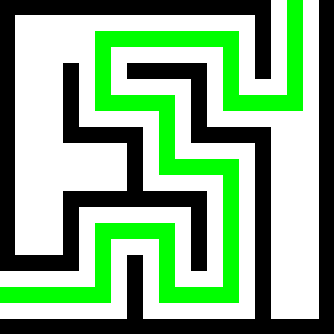Matrix representations in general, if that counts?
Complex numbers, polynomials, the derivative operator, spinors etc. they’re all matrices. Numbers are just shorthand labels for certain classes of matrices, fight me.
Would you elaborate on the last statement?
I’m just being silly, but I mean that if everything can be represented as a matrix then there’s a point of view where things like complex numbers are just “names” of specific matrices and the rules that apply to those “names” are just derived from the relevant matrix operations.
Essentially I’m saying that the normal form is an abstract short hand notation of the matrix representation. The matrices are of course significantly harder and more confusing to work with, but in some cases the richness of that structure is very beautiful and insightful.
(I’m particularly in love with the fact one can derive spinors and their transforms purely from the spacetime/Lorentz transforms. It’s a really satisfying exercise and it’s some beautiful algebra/group theory.)
So complex or quaternion I imagine? ‘i’ it is!
√-4 = 2
It’s all fun and games until someone loses an i.
ε, the base of the dual numbers.
It’s a nonzero hypercomplex number that squares to zero, enabling automatic differentiation.
Came here to say this, but since it’s already here, I’ll throw in a bonus mind-melting fact: ε itself has no square root in the dual numbers.
As a not good at math person, advanced math sounds hella fake sometimes. Like almost a parody of math. I accept that it’s real but part of me will always think it’s some inside joke or a secret society cult for the lamest god.
A lot of “advanced” maths comes from asking “What if this was a thing, how would that work? Would it even work?”, so you could say there’s a deliberate sense of “fake” about it.
Dual numbers come from “What if there was another number that isn’t 0 which when multiplied by itself you get 0?”
Basic dual numbers (and complex numbers) are no harder than basic algebra, shallow end of the pool kind of stuff, but then not everyone is comfortable getting in the water in the first place, and that’s OK too.
Thank you for the info!
Puts on floaties and a brave face, then advances to the shallow end
What is the value in learning about “What if there was another number that isn’t 0 which when multiplied by itself you get 0?”
Are there any practical applications IRL for dual numbers?
Edit: Screw Screw theory. Wikipedia says dual numbers have applications in mechanics and to see Screw Theory. I tried reading about it and my eyes glazed over so quickly. Math so isn’t for me lol.
Since there’s a reasonably strong link to calculus, and mechanics as you’ve already found, it could theoretically help in physics simulations either in a computer or on paper.
As for practical application, well, emulating physics is pretty important in a lot of computer games, or getting robots (assembly line arms, androids, automated vacuum cleaners) around the place and to do what they need without accidentally catapulting themselves into next Tuesday.
How that’s actually programmed might not involve dual numbers at all, but they’re one way of looking at how those calculations might be done.
I have a strong relationship to what you get when you divide by zero.
Good ol’ NaN
You only get NaN for division by zero if you divide 0 by 0 in IEEE floating point. For X/0 with X ≠ 0, you get sign(X)•Inf.
And for real numbers, X/0 has to be left undefined (for all real X) or else the remaining field axioms would allow you to derive yourself into contradictions. (And this extends to complex numbers too.)
I like writing swear words into the mantissa of NaN numbers
∞
Which one?
Zero
It’s the absence of a number and has all manner of interesting edge cases associated with it.
For a while 1 wasn’t considered to be a number either http://aleph0.clarku.edu/~djoyce/elements/bookVII/defVII1.html
Zero is a real number, but interestingly, it’s also a pure imaginary number. It’s the only number that’s both things at once.
As I said … lots of edge cases :)
It gets deeper. It’s also the same as the 0-k-vector, the 0-k-blade, the 0-multivector, the only number that is its own square besides 1, etc…
Zero is the absence of a quantity, but it is still a number.
Chaitin’s constants.
Not even a number.
They are still real numbers. Specifically uncomputable, normal numbers. Which means their rational expansion contain every natural number.
I always like seeing π.
Pi is a real number, though. It’s irrational, but real.
Pi written out is a real number, yes, I’m referring to the symbol representing Pi. Does that not count?
Nnnnno.
Elevendy
Negative zero, comes up in comp sci.
i?
Clavdivs?
Meow
i=sqrt(-1) is nice, but im hoping someone finds a use for the number x where |x| = -1 or some nonsense like that because it looks fun to mess with
Those exist in the split-complex number system which adds the number j, where j^2=1 (but j does not equal 1 or -1). The modulus of j is -1.
j = √-1
This comment was sponsored by EE gang
Set phasors to “confuse”
I’m a big fan of 10-adics, especially this one.
j is cool too, as is (1+j)/2.










